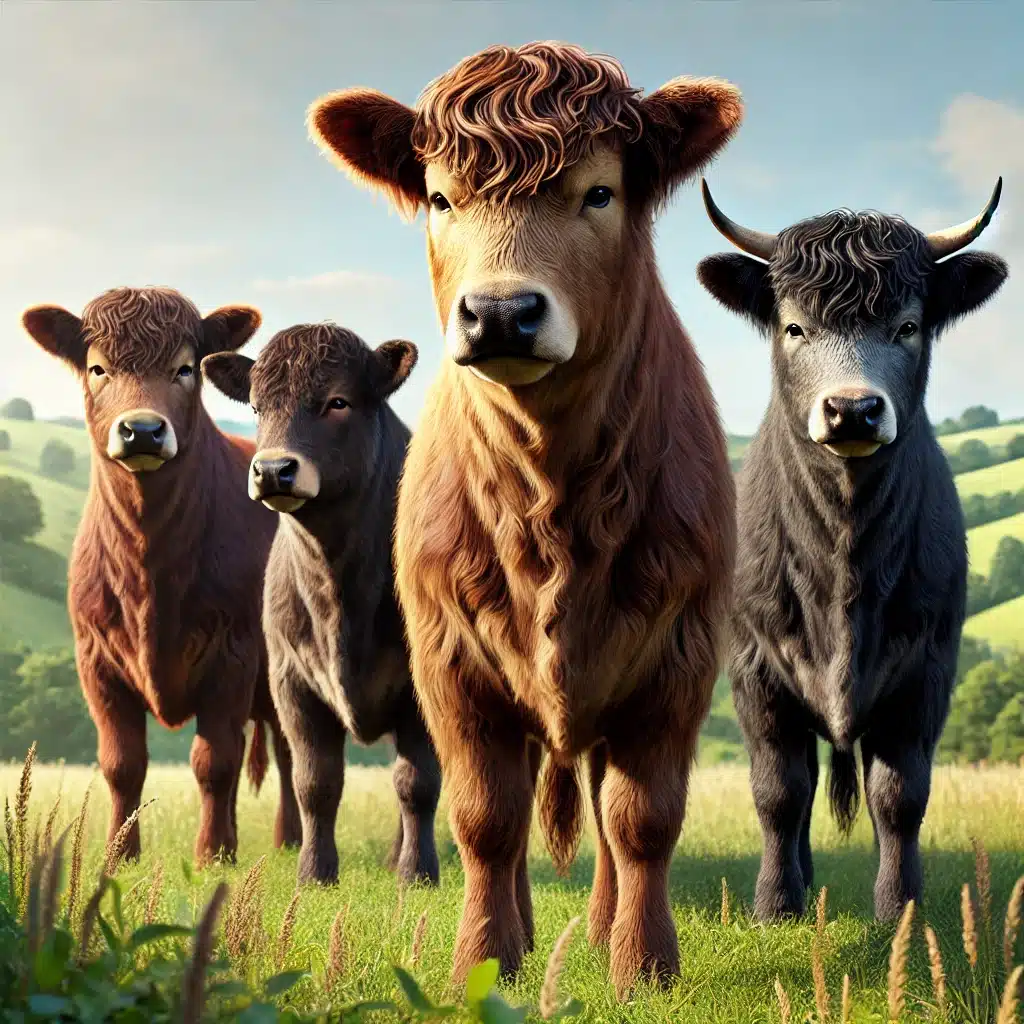Wagyu beef is often celebrated as the pinnacle of luxury in the culinary world, renowned for its buttery texture, intricate marbling, and unforgettable flavor. However, not all Wagyu beef is the same. Wagyu is derived from four distinct breeds of Japanese cattle, each offering a unique combination of flavor, fat content, and texture. Let’s delve into the fascinating differences between the Black-Haired, Brown-Haired, Japanese Shorthorn, and Polled Japanese Wagyu breeds, exploring what makes each one truly special.
Black-Haired Wagyu
Black-Haired Wagyu, or Kuroge Washu, is the most common breed of Wagyu, accounting for about 97% of all production. This breed is synonymous with the image of Wagyu most people recognize—perfectly marbled, melt-in-your-mouth beef with fine strips of fat evenly distributed throughout the lean meat. The delicate, almost snowflake-like marbling is the hallmark of Black-Haired Wagyu, delivering an unparalleled richness and smooth, velvety texture.
Known for its intensely buttery flavor and decadent mouthfeel, this breed is the backbone of famous Wagyu brands like Kobe, Tajima, and Matsusaka. Its marbling isn’t just a visual feast; it’s the source of its tender texture and luxurious taste. If you’ve ever indulged in Wagyu, chances are you’ve savored the exceptional quality of Black-Haired Wagyu.
Brown-Haired Wagyu
Brown-Haired Wagyu, also known as Akage Washu, hails primarily from the Kumamoto and Kochi Prefectures. This breed is distinctly different from its Black-Haired counterpart in both appearance and taste. Brown-Haired Wagyu features leaner meat, with fat content around 12% or less, offering a firmer texture while still retaining Wagyu’s signature tenderness.
With a mild flavor profile and a cleaner, less fatty taste, Brown-Haired Wagyu appeals to those who appreciate a lighter dining experience. It’s especially popular for health-conscious consumers seeking the quality of Wagyu but with a lower fat content. Its firmer bite and subtle sweetness make it an excellent choice for dishes where a delicate flavor is desired.
Shorthorn Wagyu
The Japanese Shorthorn, or Nihon Tankaku Washu, is a breed primarily raised in the Tohoku region of Japan. It is unique in its rearing method, known as the Natsuyama Fuyusato system, where cattle are pastured in the summer and brought indoors during the winter months. This seasonal rhythm not only ensures the cattle are raised in harmony with nature but also allows for natural mating periods during the summer.
Compared to Black-Haired Wagyu, Japanese Shorthorn has a higher proportion of lean meat and less marbling. Its flavor is often described as savory and mildly nutty, with a satisfying depth that appeals to those who enjoy a more robust beef profile. While less tender than Black-Haired Wagyu, its rich umami and distinctive flavor make it a favorite for traditional Japanese dishes.
Polled Wagyu
Polled Japanese Wagyu, or Mukaku Washu, is the rarest of all Wagyu breeds, with only a few hundred remaining in existence today. Known for its higher lean meat content, this breed delivers a rich, meaty flavor that sets it apart from its counterparts. The Polled Wagyu’s texture is often firmer and chewier, offering a hearty bite with a deep, distinctive taste.
Because of its scarcity, Polled Wagyu is highly sought after by connoisseurs looking to experience a Wagyu flavor profile that is both traditional and bold. While it may not have the intense marbling of Black-Haired Wagyu, its unique flavor and satisfying texture make it a prized delicacy among meat enthusiasts.
Why the Differences Matter
Understanding the differences between Wagyu breeds allows consumers to make more informed choices, whether they’re seeking the decadence of highly marbled Black-Haired Wagyu or the lean, robust flavors of Polled Wagyu. These breeds reflect the diverse environments, traditions, and methods of Japanese cattle farming. From the fine strips of fat in Black-Haired Wagyu to the pasture-raised care of Japanese Shorthorn, each breed embodies a different aspect of Wagyu’s legendary reputation.

